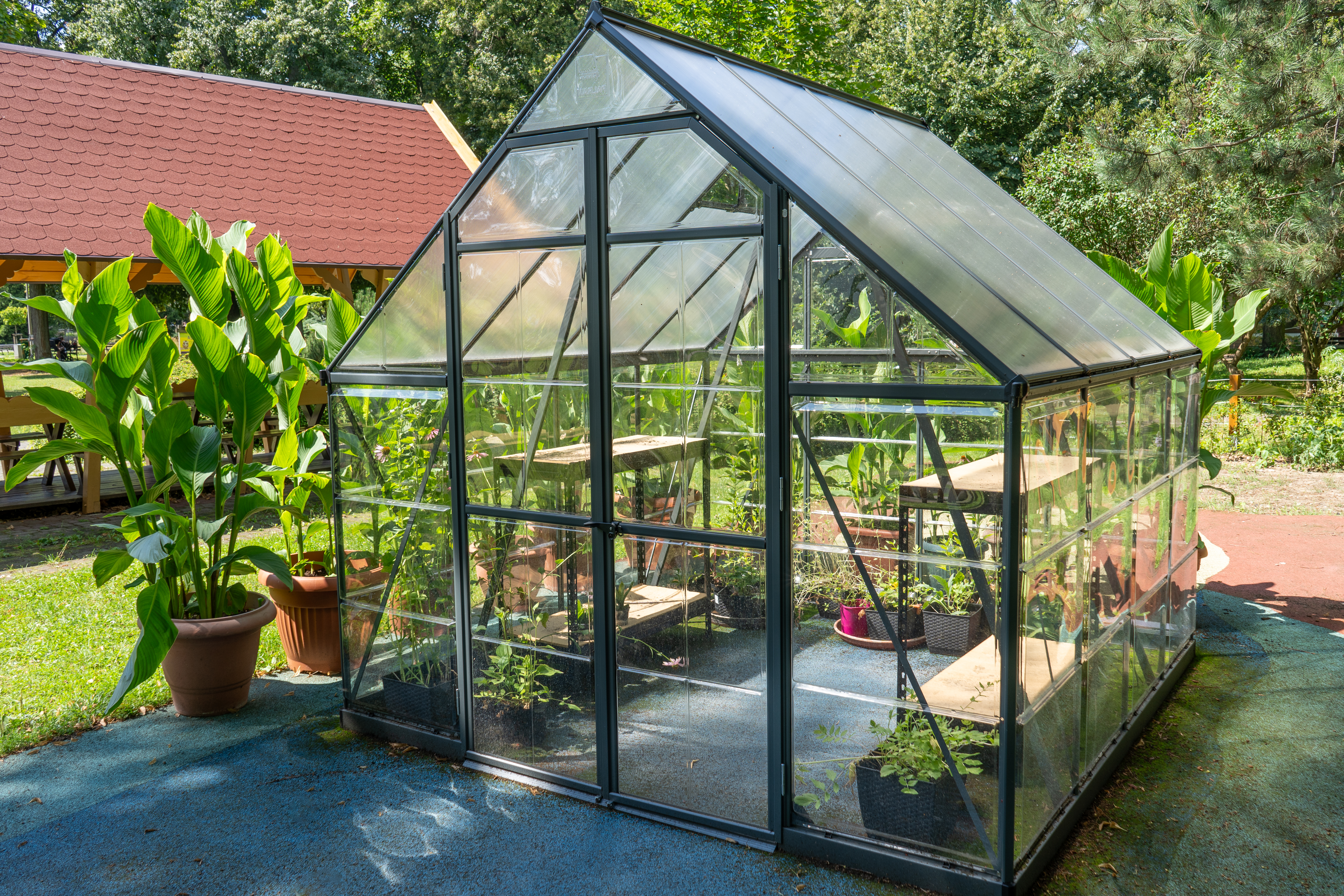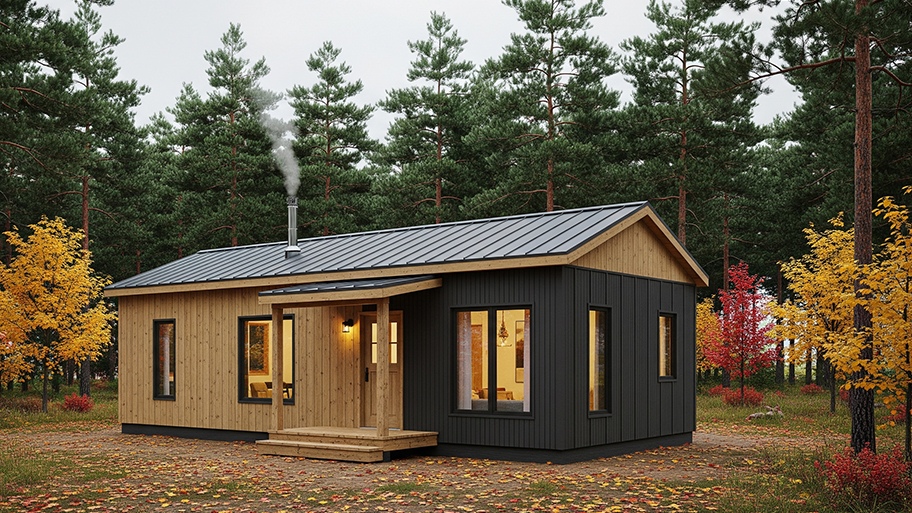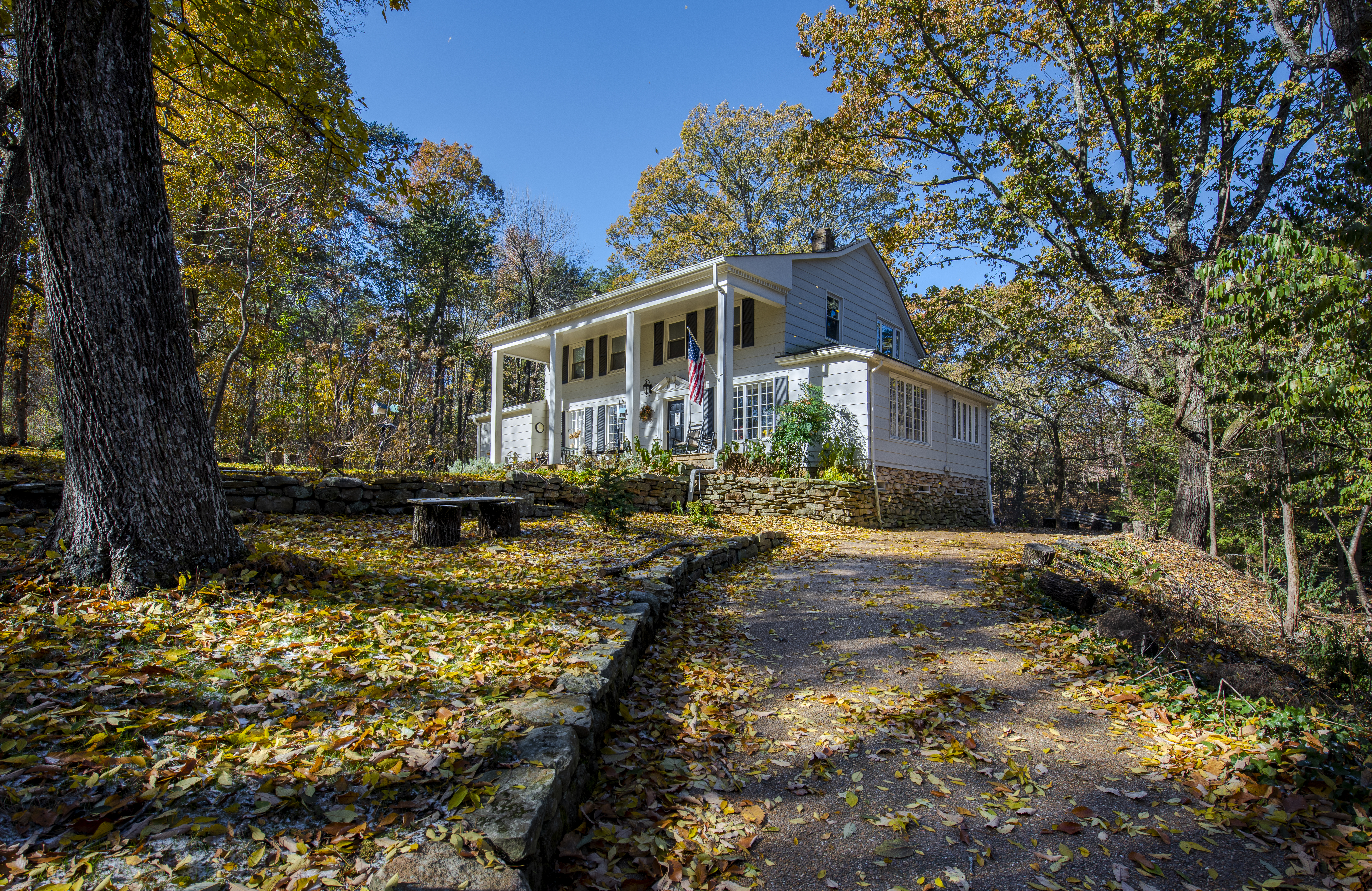
Discover the cost to build a greenhouse. Learn about average prices, key cost factors, and how to save on your greenhouse project.
Home building costs depend on your project and location. Check with a local pro for your specific job.
Building a cottage costs an average of $250,000, with prices ranging from $112,000 to $600,000.
Main cost factors include the cottage’s square footage, material quality, and current labor rates in your area.
Regional price differences and local building codes can significantly impact your overall budget.
Custom features and thorough site preparation add to the final cost but can improve comfort and durability.
Choosing a basic floor plan and handling some finishing work yourself can help keep costs down.
This article was created using automation technology and thoroughly fact-checked and edited by an Angi Editor in accordance with our AI policy.
Most homeowners spend between $175,000 and $350,000, with an average cost of $250,000. Expect to pay between $125 and $300 per square foot, depending on the design choices and location.
Building a cottage can add value, create a flexible living space, or provide a peaceful retreat. This guide will help you understand all the costs involved, so you can make informed decisions, whether you’re dreaming of a cozy getaway or a permanent home.
Understanding the main components of cottage construction costs is essential for budgeting. The total price of building a cottage covers materials, labor, permits, site preparation, utility hookups, and finishing details. Design complexity, choice of finishes, and whether you opt for a prefabricated, modular, or custom build all influence the final price.
Prefabricated or modular cottages often offer savings on both labor and materials, while custom builds provide the most flexibility but come at a premium. Site-specific factors, such as access, foundation requirements, and landscaping, will also play a role.
| Cost Component | Description | Average Cost Range |
|---|---|---|
| Materials | Lumber, roofing, windows, siding, and finishes | $50,000–$140,000 |
| Labor | Skilled trades and general construction | $40,000–$120,000 |
| Permits | Local building, electrical, plumbing, and septic | $2,000–$10,000 |
| Site prep | Clearing, grading, and foundation work | $5,000–$25,000 |
| Utilities | Water, sewer/septic, electric, gas | $10,000–$30,000 |
| Finishing | Flooring, paint, cabinetry, appliances | $8,000–$30,000 |
Cost differences between prefabricated and custom cottages can be significant. Prefab options streamline construction for lower costs, while custom builds allow full personalization but require a larger investment.
The square footage of your cottage is one of the most direct factors affecting total cost. Smaller cottages are more affordable, while larger footprints and extra stories drive up expenses. The price per square foot for a cottage ranges from $125 to $300, influenced by layout, material choices, and regional labor rates.
Popular cottage sizes include cozy 600-square-foot studios, family-friendly 1,000-square-foot layouts, and more spacious 1,500-square-foot homes. Adding bedrooms, bathrooms, or a second story increases both material and labor costs.
| Cottage Size (Sq. Ft.) | Description | Average Total Cost |
|---|---|---|
| 600 | Compact, 1 bed/1 bath | $75,000–$180,000 |
| 1000 | 2 beds/1–2 baths | $125,000–$300,000 |
| 1500 | 3 beds/2 baths, open plan | $200,000–$400,000 |
Expanding your cottage’s size or complexity—such as adding a loft, sunroom, or extra bathroom—will increase your total build budget.
Several professionals play key roles in building a cottage. Your team may include a general contractor to oversee the entire process, an architect or designer for plans and compliance, and specialized trades such as electricians, plumbers, and HVAC technicians.
Professional fees are structured as flat rates, hourly charges, or a percentage of the total project cost. Rates can vary widely by region and project complexity, so it’s wise to compare multiple bids and clarify what’s included before signing any contracts. You’ll hire your general contractor first, followed by architects or designers, then specialty trades as construction progresses.
A general contractor manages your cottage build from start to finish. This includes scheduling, hiring, and supervising subcontractors, sourcing materials, and ensuring work meets local codes. General contracting services cost between 10% and 20% of the total project cost, or a flat fee based on the scope of the build.
General contractors provide peace of mind by coordinating all the moving parts, allowing you to focus on design choices rather than day-to-day management.
Hiring an architect or designer is essential if you want a custom layout, unique features, or need help navigating local building codes. Architect fees range from $100 to $250 per hour, or 5% to 15% of the total project cost for full-service design and oversight.
Services include preparing blueprints, ensuring code compliance, and integrating your vision into a buildable plan. For simple cottages, a designer or drafter may be sufficient and cost less than a licensed architect.
Specialty trades are required for the safe and code-compliant installation of electrical, plumbing, and HVAC systems. Electricians charge $3,000 to $8,000 for wiring a cottage, plumbers cost $4,000 to $12,000 for rough-in and fixtures, and HVAC installer fees range from $5,000 to $15,000 for heating and cooling.
These pros handle complex, regulated work best left to licensed experts. Their fees reflect both labor and necessary materials.
Beyond the core team, several other professionals may be needed for your cottage build:
Land surveyor: $500 to $2,000 for site assessment and property boundary marking.
Structural engineer: $1,000 to $3,500 to evaluate foundations or special features.
Landscape architect: $1,500 to $6,000 to design outdoor spaces and drainage.
Interior decorator: $1,000 to $8,000 for selecting finishes, colors, and furnishings.
Septic system installer: $3,000 to $10,000 if your site is not connected to a municipal sewer.
These additional experts help ensure your cottage is safe, comfortable, and tailored to your needs.
Geographic location plays a significant role in determining the cost of building a cottage. Labor rates, material availability, and permit fees all fluctuate by region. Urban areas and states with high demand or strict building codes often have higher costs, while rural areas may offer savings but require more for utility hookups or transportation.
For example, coastal states and major metro areas in the Northeast and West tend to have the highest cottage construction costs. Midwest and Southern states are often more affordable, especially in non-urban settings.
| Region/State | Description | Average Cottage Build Cost |
|---|---|---|
| Northeast | High demand, strict codes | $250,000–$400,000 |
| Midwest | Lower labor, moderate materials | $150,000–$280,000 |
| South | Affordable labor, mild climate | $140,000–$260,000 |
| West | High materials, seismic requirements | $200,000–$400,000 |
| Rural areas | Fewer codes, higher utility setup costs | $150,000–$300,000 |
| Urban areas | High labor, permit, and land costs | $200,000–$400,000 |
Always check with local building departments and contractors to get the most accurate estimates for your specific location.
Beyond the major components, several other factors can influence the total cost of building a cottage. It’s important to budget for property taxes, insurance, builder or manufacturer warranties, and any special features you want to include. Accessibility upgrades, repairs to existing infrastructure, and post-construction cleanup should also be considered.
Unexpected expenses can arise, so setting aside 10% to 15% of your budget for contingencies is a wise move.
If you’re building on land with an existing structure, demolition may be required before construction begins. Site clearing and grading costs range from $5,000 to $20,000, depending on lot size, vegetation, and site conditions.
Removing trees, old foundations, or debris adds to the prep bill. Challenging sites—such as sloped lots, rocky soil, or areas with poor drainage—will require more extensive and costly preparation.
Building a cottage requires several permits, including general building, electrical, plumbing, and septic (if not connected to a municipal sewer system). Your contractor can often help secure these, but homeowners are ultimately responsible for ensuring compliance with these regulations.
Permit costs vary by municipality, ranging from $2,000 to $10,000 or more in areas with strict codes. The process can take several weeks, so factor this time into your project schedule.
Some homeowners consider DIY construction as a way to save on labor costs. Building a cottage yourself can reduce expenses, but it demands significant time, skill, and access to the right tools. Common DIY tasks include framing, installing insulation, painting, and landscaping.
However, crucial steps like foundation work, electrical, and plumbing should always be handled by licensed professionals to ensure safety and code compliance. DIY projects can take months longer and may risk costly mistakes, failed inspections, or insurance issues. For most, a hybrid approach—handling some finishing tasks yourself while hiring a local home builder for structural and technical work—offers the best balance of savings and quality.
It’s important to distinguish between remodeling and renovating a cottage. Remodeling involves major changes such as altering the layout, building additions, or structural updates. Renovating focuses on refreshing finishes, restoring original features, and making minor repairs.
Remodeling is more expensive, with costs ranging from $50,000 to $200,000 depending on the scope. Renovation projects are more budget-friendly, with starting costs ranging from $20,000 to $60,000. Choose a remodel if you need more space or want to modernize the structure. Renovate if you want to preserve charm or update finishes without changing the core layout.
Examples of remodels include adding a bedroom, expanding the kitchen, or building a porch. Renovations involve refinishing floors, updating the bathroom, or painting the exterior.
Building a cottage is a significant investment. To keep costs budget-friendly, consider the following tips:
Choose a smaller or simpler floor plan to minimize material and labor expenses.
Opt for standard materials and finishes rather than high-end or custom options.
Source materials locally to reduce shipping and delivery costs.
Handle some finishing work, such as painting or landscaping, on your own.
Compare multiple bids from contractors to ensure competitive pricing.
Avoid unnecessary customizations that can quickly drive up costs.
Build during off-peak seasons when contractors may offer better rates.
Reuse or repurpose materials when possible to stretch your budget further.
Building a cottage can increase your property’s value and offer strong resale potential, especially in desirable locations. Return on investment (ROI) varies, but cottages often recoup 60% to 80% of their construction cost when designed well and maintained.
Key value drivers include location, build quality, design appeal, and local market trends. A cottage can serve as a guest house, short-term rental, or living space for extended family, which increases its utility and attractiveness to future buyers. To maximize value, invest in quality construction and timeless design rather than trendy features.
Home is the most important place on earth, which is why Angi has helped more than 150 million homeowners transform their houses into homes they adore. To help homeowners with their next project, Angi provides readers with the most accurate cost data and upholds strict editorial standards. We extensively research project costs to develop the pricing data you see, so you can make the best decisions for you and your home. We rely on reputable sources, including the U.S. Bureau of Labor Statistics, academic journals, market studies, and interviews with industry experts—all to ensure our prices reflect real-world projects.
Want to help us improve our cost data? Send us a recent project quote to [email protected]. Quotes and personal information will not be shared publicly.
From average costs to expert advice, get all the answers you need to get your job done.

Discover the cost to build a greenhouse. Learn about average prices, key cost factors, and how to save on your greenhouse project.

Modular homes are more affordable than stick-built homes, but by how much? Learn about modular home costs to see if they fall within your budget.

Get transparent shed repair cost info so you can learn average prices, cost factors, and ways to save on shed repairs for your home.

Looking to compare a mobile home vs. a tiny home? Here, we share the significant differences, including the best lifestyles for each home type.

Decide whether a wood or brick house is better for you based on factors like upfront costs, durability, longevity, resale value, and ease of repair.

Discover the cost to build a saltbox house. Learn about price factors, regional variations, and ways to save on your saltbox home construction project.